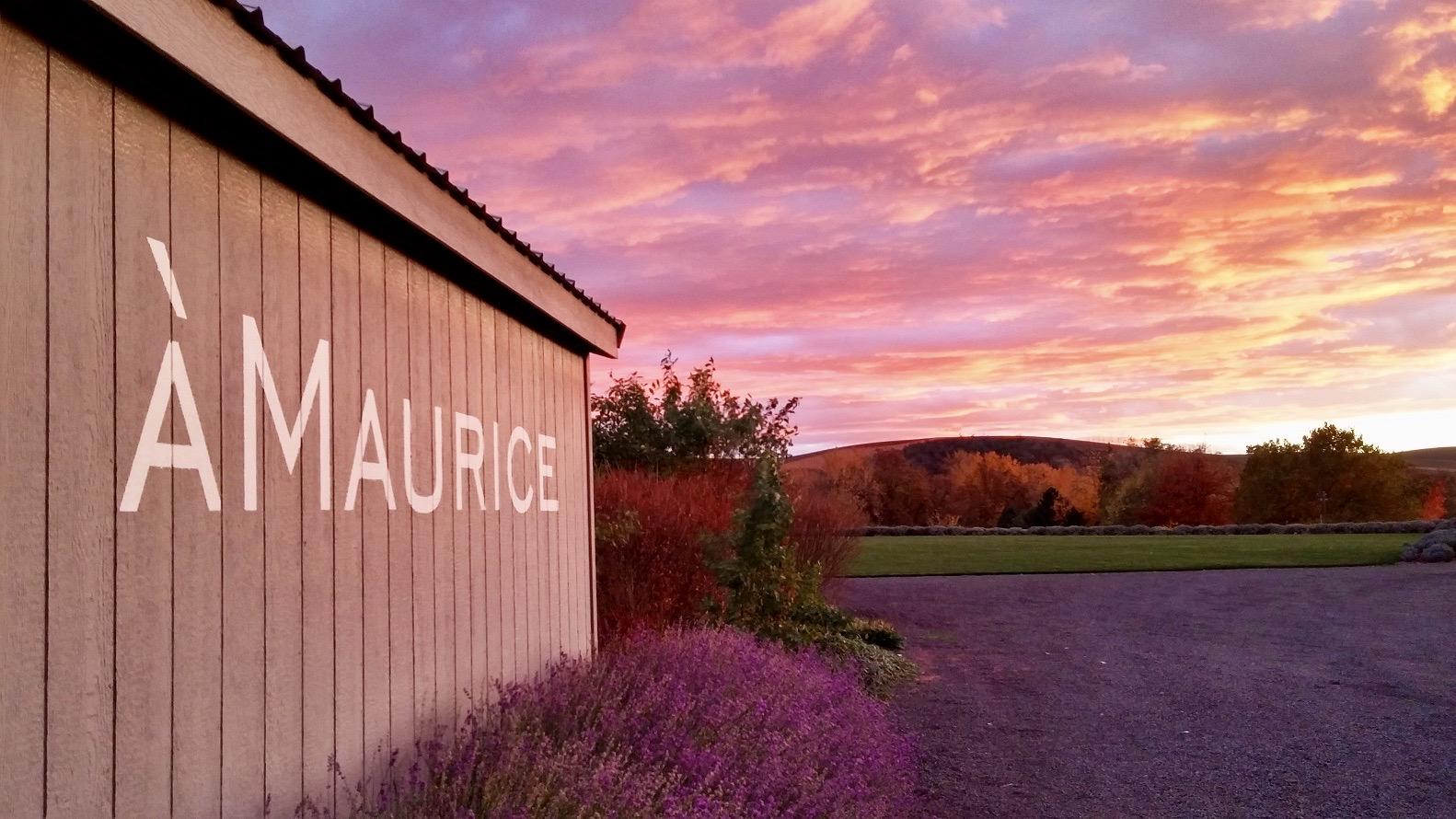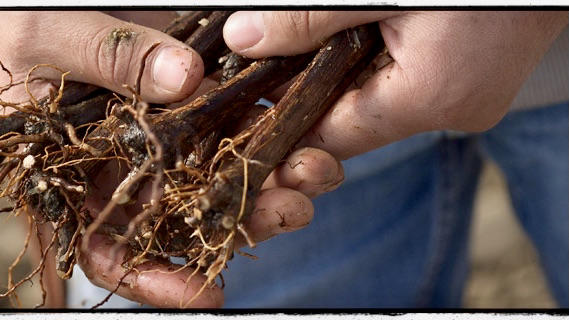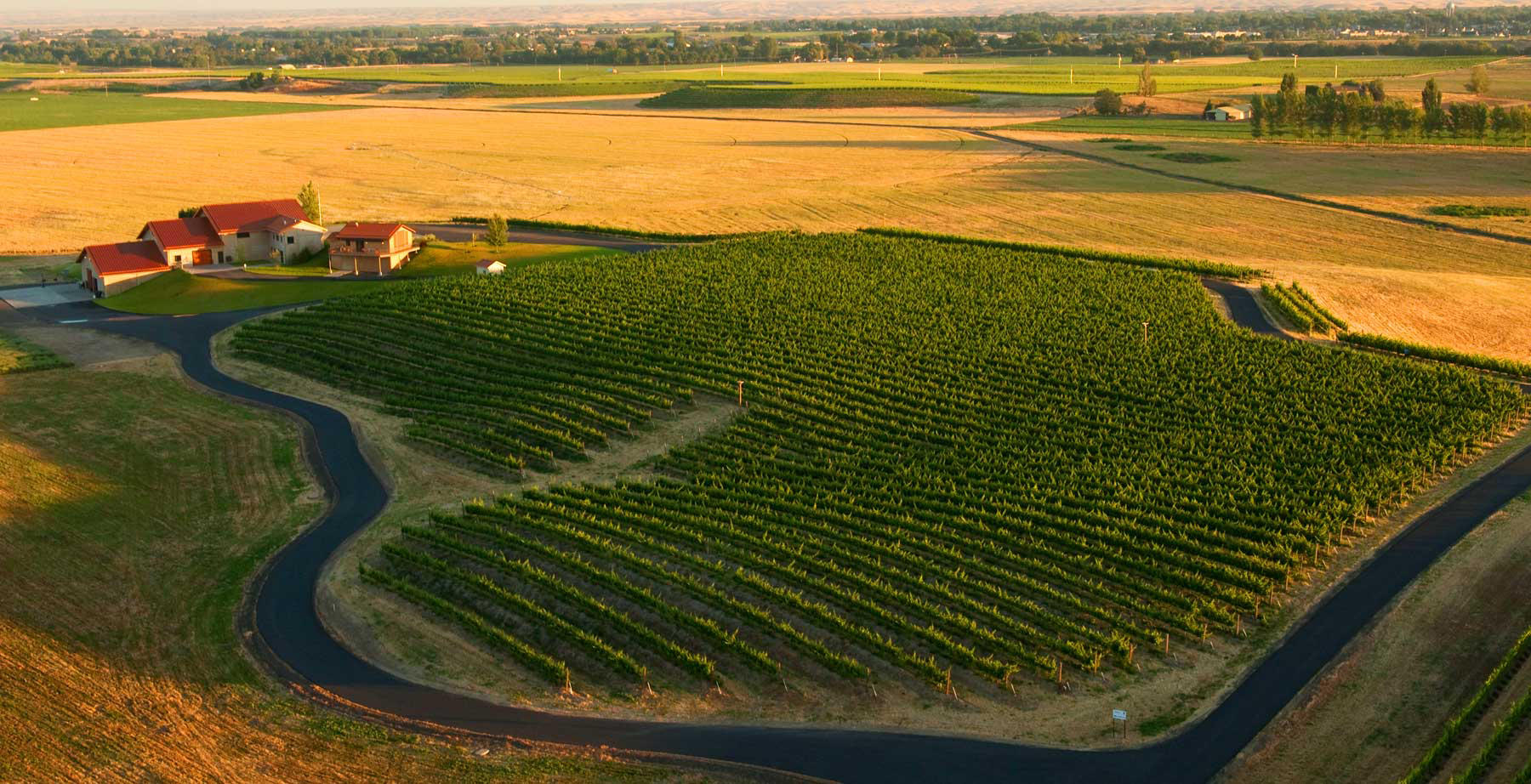Winemaking
Winemaking in Walla Walla followed the expansion of wine production in Washington State since the 1970s. Let's take a look at the current wine styles in Walla Walla and explore quality through how these wines are made.
Why are Red Blends so popular here?
Blending varieties together gives winemakers freedom to create unique wines. In the Walla Walla Valley, it's popular to use a base of Cabernet Sauvignon and/or Merlot.
So, what makes a balanced blend? Here's the winemaker from FIGGINS.

Knowing that FIGGINS would always be a single vineyard label, having the three grapes of Cabernet Sauvignon, Merlot, and Petit Verdot is particularly advantageous in creating an amazing wine each year, whether the growing season is hotter or cooler than normal.
For example, very warm years, like 2015, resulted in a wine with a Cabernet Sauvignon core framed by a relatively large percentage of Petit Verdot. Cooler years, like 2011, resulted in a Cabernet core but with a high percentage of the earlier ripening Merlot and almost none of the late-ripening Petit Verdot.
Not being restrained by a blending percentage to meet a “varietal label” requirement allows us the flexibility to create a world-class single vineyard wine every year."
What makes for great Cabernet in the valley?
A great bottle of Cabernet Sauvignon seems to be equal parts fruit, earth, and texture all wrapped together with a velvety finish.
In the Walla Walla Valley, winemakers use a few strategies to reach perfection.

At àMaurice Estate, our Cabernet starts with the clone. We use clone 8 which is an old school Washington clone and we love its raw nature. We've found it to be very communicative of each individual vintage.
We also dry farm which means no irrigation. This is pretty rare in the Walla Walla Valley. And it's truly remarkable that we're able to do so at nearly 1,500 feet in elevation.
So, let's get into the nitty gritty details of growing great Cabernet in Walla Walla. To farm Cab it's important to monitor spur count, yield, and leaf coverage. Our site has 8 foot trellises.
During the growing season, we typically strip basal leaves to expose clusters to sunshine. This helps mitigate those green-tasting pyrazines. Of course, we're not afraid to show some subtle green notes in our Estate Cabernet. If it's monitored correctly, it gives these wonderful sun-dappled forest floor or even wild rose petal aromas.
In the winery, fermentation kinetics are vital in being successful with Cabernet. Steady and gentle movements result in the softest tannins.
Oak helps build a strong foundation but we don't like to under or over power the fruit. We're lucky to be able to modulate our oak program based on the type of tannins we observe each vintage.
Walla Walla Valley Syrah
The vineyards with stony soils in Walla Walla produce some of the most exciting Syrah in Washington State. These wines are deep-yet-floral with subtle savory notes of white pepper and black olive.
So, the question is: how are winemakers managing Syrah in the vineyards and cellar to get these flavors?

I am from a family of vignerons from the Marne Valley of France and we've been farming vineyards there since the 17th century. When I was studying viticulture and enology in Burgundy we would go on the weekends to the Northern Rhône. This is where I fell in love with Syrah. Tasting all those Syrahs I realized what a versatile grape it is and how it connects with terroir.
And that unique terroir is what I found in the Walla Walla Valley. And that's the reason why I decided to plant Syrah in The Stones of the Walla Walla Valley. These Syrahs are very unique.
Also, the reason why our Syrahs are unique is because we farm with a biodynamic approach. So, it starts of course in the vineyards. We cultivate the soils so that the vines push the roots to go deep into the Stones. Protecting the fruit from the heat and the sunlight is very important. To me, to produce wine with great characters, crop thinning is also very important.
It is all those details that makes the difference for us to get the grapes to reach physiological ripeness at lower sugar levels.
It is paramount to harvest the fruit when it's ripe, but not overripe. We pick by flavor not sugar level. You have to trust your palate. Fortunately the vineyards right beside the Wine Studio so we can taste everyday.
Then, when the grapes are in the Wine Studio we like to work with some whole cluster fermentation. All our fermentations start spontaneously and come from indigenous yeasts. We don't inoculate because the fruit is so healthy due to our biodynamic farming methods; it's very much alive!
We do very minimal intervention in the Wine Studio. Light punch downs and very short pump overs. Then we press and it goes straight into the barrel. We use a minimal amount of new French oak: 10–15% for the Syrah. And we only rack once; right before bottling. No fining or filtering of course!
We try to not intervene as much as possible. Voila! The magic is in the bottle.
Tell me more about Walla Walla Valley white wines.
White wine varieties are a bit of a quandary because the region is quite warm. Still, grapes like Sauvignon Blanc, Sémillon, Viognier, and Roussanne produce great quality wines. But how?
Let's explore one winemaker's strategy.

Being a 3rd generation winegrower/winemaker from Switzerland, I cut my teeth and really enjoy making white wine.
Despite the fairly hot climate that Walla Walla Valley has to offer, I have been amazed since early 2000 how the white could have a great flavors concentration within keeping a fantastic freshness and acidity. I really attribute this to some good site selection but mostly precise grape growing with an adequate crop production.
We usually keep the clusters very protected during the hot season to avoid “sunburn” and right after the beginning of August, we open the clusters zone deeply to let the berries mature properly.
One of the other major factors for keeping all those key wine quality attributes is the picking decision. I usually go in the vineyard every day to taste and samples.
Our winemaking technique are fairly simple and gentle. We destemmed about 40%, let soak for 6-12 hours and then assemble with the whole cluster portion to be pressed. The juice settles 24 hours in a stainless-steel tank at cold temperature and then transfer to concrete eggs or barrels.
We use mostly neutral oak beside 5-10% of new one. The alcoholic fermentation usually take 25-30 days at cold temperature and then we just age the wine on lees without steering for 4-5 months. We do not go through any Malolactic fermentation at all.
Talk to the winemaker
Each wine region has unique ways of growing grapes and making great wines. Next time you travel, ask the winemaker how they do it and you're bound to learn a lot!